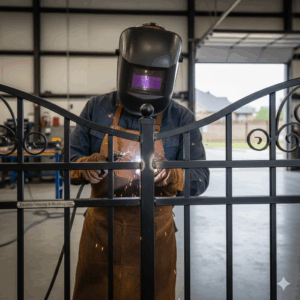In recent years, Artificial Intelligence (AI) has made significant strides in revolutionizing healthcare—from diagnostics and imaging to patient engagement. Among these innovations, Scribe AI is quietly reshaping how doctors handle one of the most time-consuming tasks in medicine: clinical documentation.
As healthcare providers seek to reduce administrative burdens, improve accuracy, and focus more on patient care, Scribe AI has emerged as a game-changer. But what is it exactly? How does it work? And what does its rapid rise mean for the future of medical scribes and healthcare delivery?
Let’s dive into a complete overview of Scribe AI in healthcare.
What is Scribe AI?
Scribe AI refers to artificial intelligence tools designed to automatically generate clinical documentation during or after patient encounters. By listening to conversations between healthcare providers and patients, the AI can produce real-time or post-visit medical notes that are accurate, organized, and ready for Electronic Health Record (EHR) input.
🔍 Related: What is Medical Scribe?
A medical scribe, traditionally, is a human assistant who records patient information for doctors. Scribe AI is the digital version—an intelligent software that listens, understands, and writes.
How Scribe AI Works: The Technology Behind It
The rise of Scribe AI is powered by a blend of advanced technologies:
1. Automatic Speech Recognition (ASR)
This tech converts spoken language into text in real-time. It detects different voices, accents, and even medical jargon.
2. Natural Language Processing (NLP)
NLP allows the AI to understand medical context, such as identifying symptoms, diagnoses, medications, and next steps.
3. Machine Learning (ML)
With each encounter, the system learns from corrections and feedback, becoming more accurate and personalized over time.
4. Integration with EHR Systems
Most Scribe AI platforms offer direct integration with major EHR systems like Epic, Cerner, and Athenahealth—so notes flow seamlessly into the doctor’s workflow.
Why Scribe AI is Gaining Traction in Healthcare
✅ Reduces Physician Burnout
Documentation can take up 30–50% of a physician’s day. Scribe AI dramatically reduces that load, giving doctors more face time with patients.
✅ Increases Efficiency
AI scribes work in the background—no typing or dictation needed. Doctors can finish more visits in less time.
✅ Improves Accuracy
AI tools capture everything said, minimizing missed details and errors caused by memory or multitasking.
✅ Cost-Effective for Clinics
Hiring and training human scribes can be expensive. AI alternatives often reduce long-term operational costs.
Top Use Cases of Scribe AI in Healthcare
-
🏥 Primary Care & Family Medicine – Quick note-taking for routine checkups
-
🚑 Emergency Departments – Speed and accuracy in high-volume environments
-
🧑⚕️ Specialty Practices – Detailed, complex records in fields like cardiology or neurology
-
📞 Telehealth Platforms – Real-time documentation for virtual appointments
-
🩺 Mobile Practices & Home Care – Portable devices use Scribe AI to document visits on the go
Popular Scribe AI Tools in 2025
Here are some leading platforms pushing the boundaries of medical AI scribing:
| Platform | Key Features |
|---|---|
| DeepScribe | Ambient scribing, NLP, EHR integration |
| Suki AI | Voice-activated notes, mobile-friendly interface |
| Augmedix | Real-time scribing + human quality assurance |
| Dragon Ambient eXperience (Nuance) | Trusted by major health systems, powerful ASR engine |
| Abridge | AI summary + patient-friendly note sharing |
Challenges & Limitations of Scribe AI
Despite rapid growth, Scribe AI is not without its hurdles:
❗ Accuracy in Noisy Environments
Background noise, multiple speakers, or unclear speech can reduce transcription accuracy.
❗ Understanding Medical Nuance
AI can miss non-verbal cues, patient emotions, or clinical judgment nuances.
❗ Data Security & HIPAA Compliance
Handling patient data requires strict encryption and compliance protocols.
❗ Physician Adoption Curve
Doctors may need to adjust their speaking style or workflow to optimize AI performance.
Will AI Replace Human Medical Scribes?
The short answer is: Not yet.
While Scribe AI can do much of the documentation heavy lifting, human scribes still offer adaptability, judgment, and real-time clarification that AI tools can’t match—yet. The future likely lies in hybrid models, where AI handles routine documentation and humans review and refine complex cases.
The Future of Scribe AI in Healthcare
With growing investment in AI healthcare startups and ongoing EHR evolution, expect major advancements:
🚀 Predictive Note Suggestions
🚀 Automated Billing Codes & ICD Mapping
🚀 Multilingual Support & Global Rollout
🚀 Full Ambient Clinical Intelligence (ACI)
As AI gets smarter, it may go beyond documentation—offering clinical insights, alerts, and treatment suggestions, all in real time.
Conclusion: Embracing the Rise of Scribe AI
The rise of Scribe AI is more than just a tech trend—it’s a transformation of how healthcare providers work. By reducing documentation burdens, boosting efficiency, and enhancing patient focus, Scribe AI is changing the game for doctors, clinics, and health systems alike.
Whether you’re a physician, practice manager, or aspiring medical scribe, now is the time to understand, explore, and adapt to this powerful technology.
💬 Have questions or experiences with Scribe AI? Share your thoughts in the comments below!








